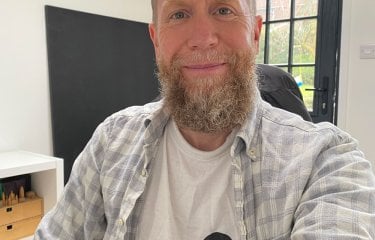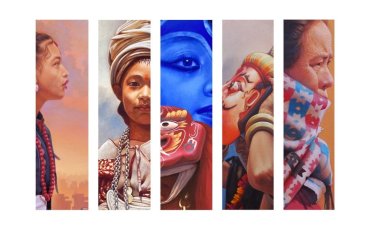Illustration Alumnus Part of Team That Has Won $100K in NASA Competition
12 June 2019
A degree in Illustration can take you much further than book covers, editorial pieces and product designs. As Jason Riley, 1992 alumnus from Falmouth School of Art, has come to learn, illustration can take you into all sorts of industries; it can even take you to Mars.
Jason has been working with SEArch+ LLC (Space Exploration Architecture), designing self-sustainable accommodation and community buildings for future life on Mars. The team are delighted to announce they have won $100k in the NASA 3D Printed Habitat Competition.
The mission of SEArch+ is “to conceive, investigate and produce innovative ‘human-centred’ designs which enable human beings to not only live but thrive in space environments.”
When asked how it felt to land such an incredible prize, Jason told us: “As [SEArch+] are based in the States, a Skype call came through about 6am, saying ‘JASON – WE WON!’. It didn’t sink in until I was eating breakfast. I remained silent until my wife Rachel asked, ‘Are you alright?’ and I responded with ‘WE WON, WE CHUFFIN’ WON!’”
“It has been an amazing experience,” Jason continued, “to not only do something that could one day become true contribution towards the Space Race, but to help win the virtual design phase of the project. And to think, after five years of setting up on my own, this comes along. It’s the thing of dreams!”
The team initially designed the buildings nine months prior to the competition, but “it did not tick all the boxes on safety, light and general functionality”, so the team started to get more classified descriptions from NASA about atmospheric pressure and hazardous problems on Mars, like cosmic radiation and crew safety procedures.
Jason said: “We were fixed on a design called the ‘Hyperbolic’ Structure, where the building would consist of a light crisscross aluminum structure that would hold its weight firmly and withstand high speed winds in every direction. The aluminum mesh would then have a 3D printed layering effect of ground Mars Indigenous Basalt, thick enough to protect the crew from radiation. As you can see, it’s a fully functional design if not fun – like a helter-skelter.”
Jason’s role in the project was to design specs to marry up a design of a 3D printer with a NASA Electronic Vehicle base and produce various illustration assets.
He told us: “I had to come up with the flat landscape of Mars, a hell of a lot of interior and exterior assets, ten major illustrations and two animations in six weeks, [including] the NASA SACD Hercules rocket model. Not forgetting the building itself, which they provided. It was my job to shade and texture it.”
When asked what advice he would give to people looking to follow in his footsteps, Jason said: “Keep an open mind. Be versatile. The biggest mistake I made was thinking I was going to get a job doing just book illustration, which is what I was trained to do. I happily ended up doing games for a short while – twenty years! – after which I wanted to go back to illustrating but with a twist, including 3D animation too.”
“There are so many outlets to try,” he told us, “like Architectural, Interiors, Products, Science, Theatre. Keep your faith. Keep on applying. You’re going to get rejections whatever you do, so don’t give up.”







